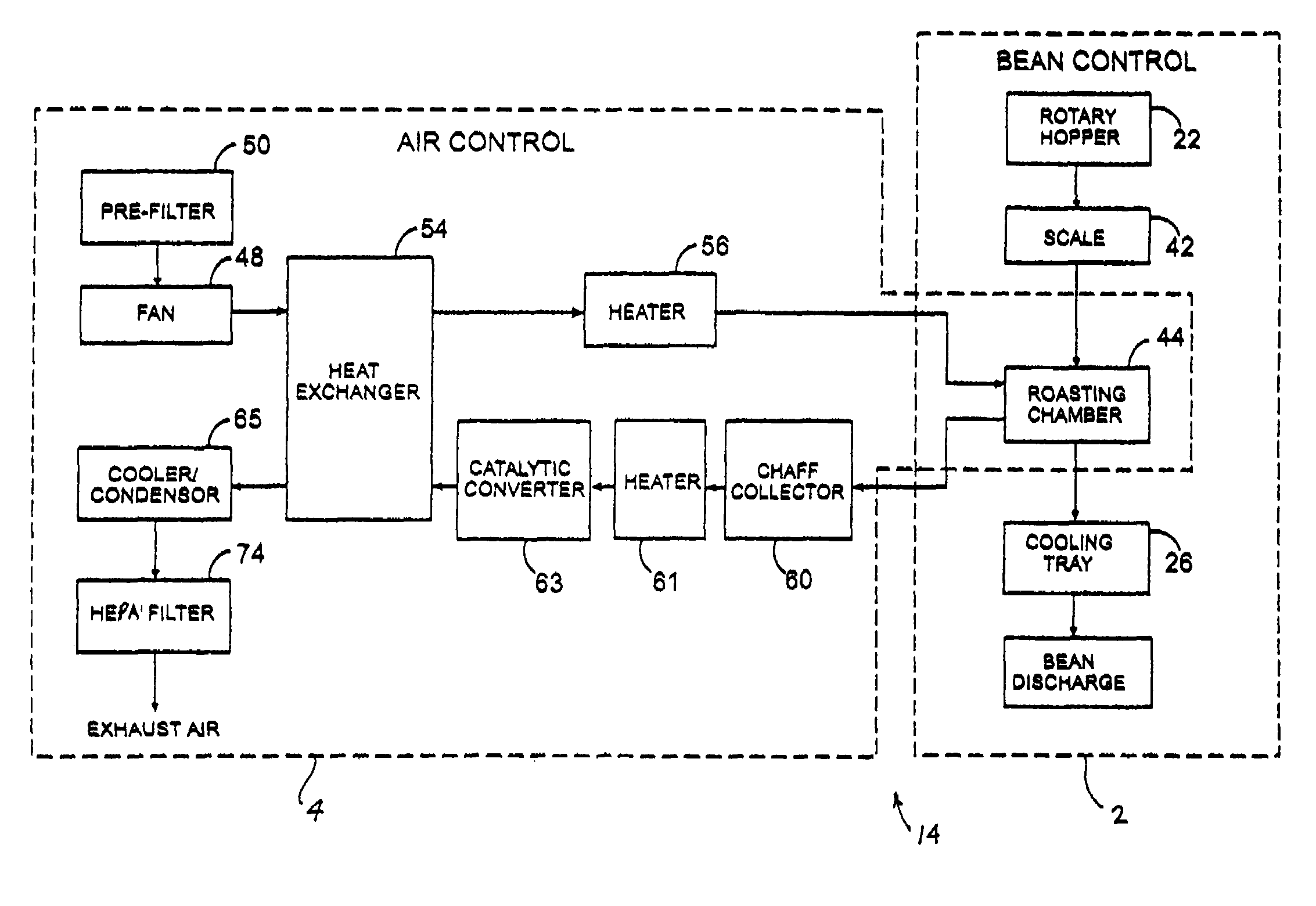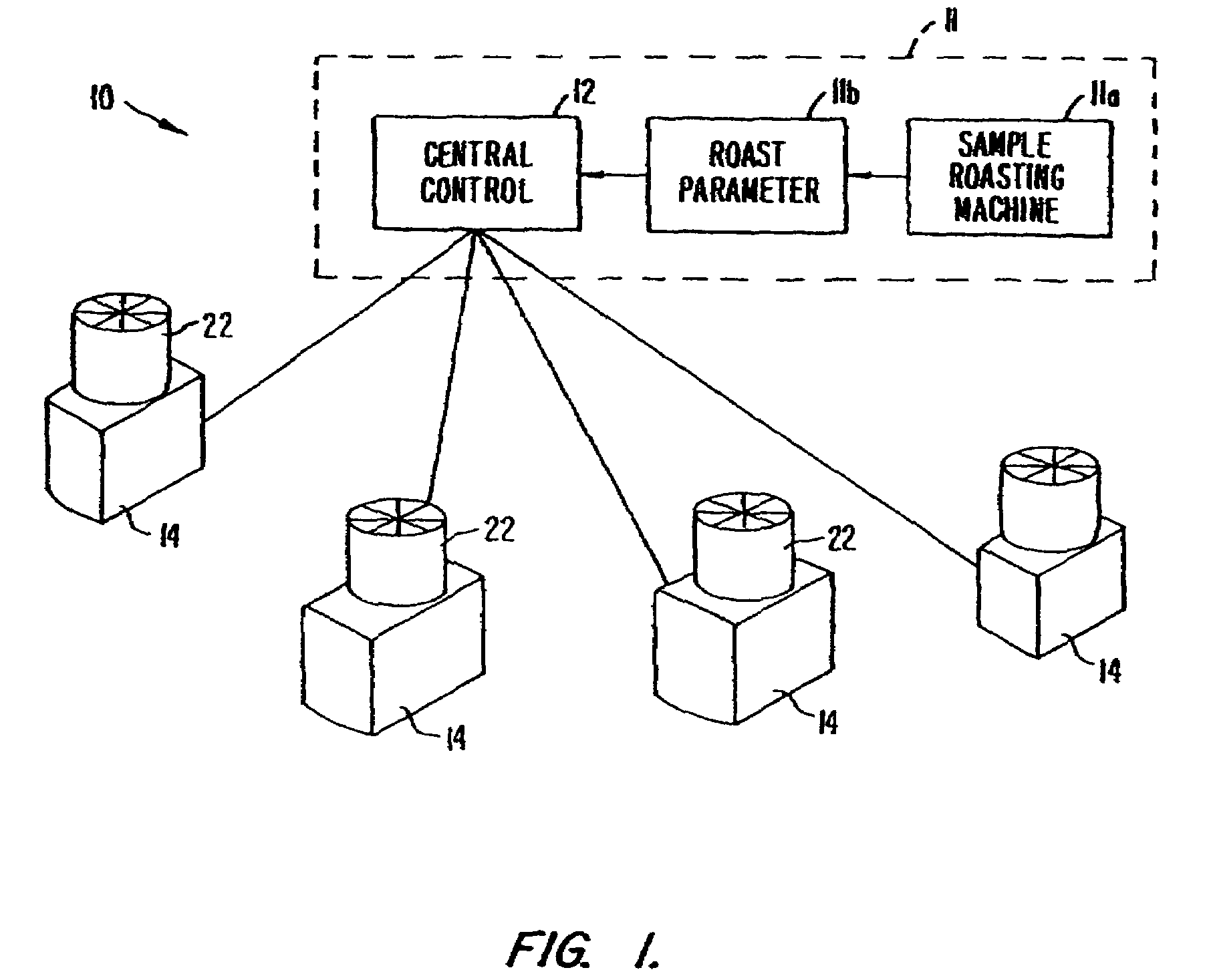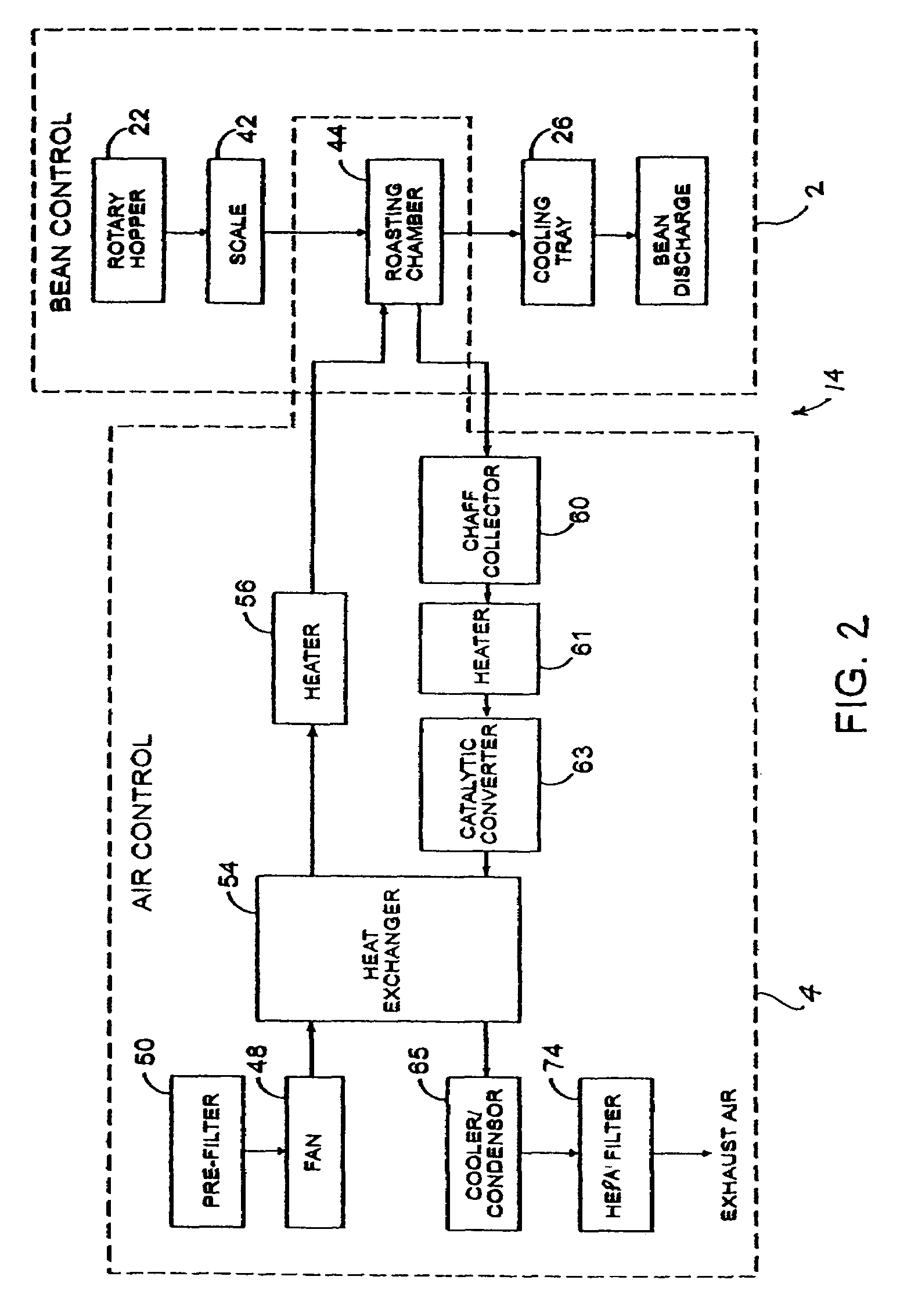Method and apparatus for preventing the discharge of powdery caffeine during coffee roasting
a technology of coffee roasting and coffee beans, applied in the field of methods and equipment, can solve the problems of not being able to effectively distribute, time-consuming and costly, and coffee beans currently for sale at retail establishments are seldom fresh, and achieve the effect of reducing or reducing the quantity of co
- Summary
- Abstract
- Description
- Claims
- Application Information
AI Technical Summary
Benefits of technology
Problems solved by technology
Method used
Image
Examples
Embodiment Construction
[0018]The present invention is directed to a coffee bean roasting method and apparatus having an internal air cleaning system that eliminates the need for exhausting roasting air to the exterior of buildings. Instead, clean, cooled air, typically at or near room temperature, can be released into closed rooms, and the discharge and accumulation of caffeine, particularly fine caffeine powder, in the vicinity of the roasting machine is substantially eliminated. As a result, roasting machines made in accordance with this invention can be placed inside stores and can be operated to provide daily roasted coffee beans that have consistent and uniform flavor without exposing persons to unhealthy and potentially harmful caffeine residues, powder and the like, and the side effects this can cause.
[0019]FIG. 1 schematically illustrates a centrally controlled multi-station coffee roasting system 10 which can employ the present invention. The system has a central control station 11 that includes ...
PUM
 Login to View More
Login to View More Abstract
Description
Claims
Application Information
 Login to View More
Login to View More - R&D
- Intellectual Property
- Life Sciences
- Materials
- Tech Scout
- Unparalleled Data Quality
- Higher Quality Content
- 60% Fewer Hallucinations
Browse by: Latest US Patents, China's latest patents, Technical Efficacy Thesaurus, Application Domain, Technology Topic, Popular Technical Reports.
© 2025 PatSnap. All rights reserved.Legal|Privacy policy|Modern Slavery Act Transparency Statement|Sitemap|About US| Contact US: help@patsnap.com



